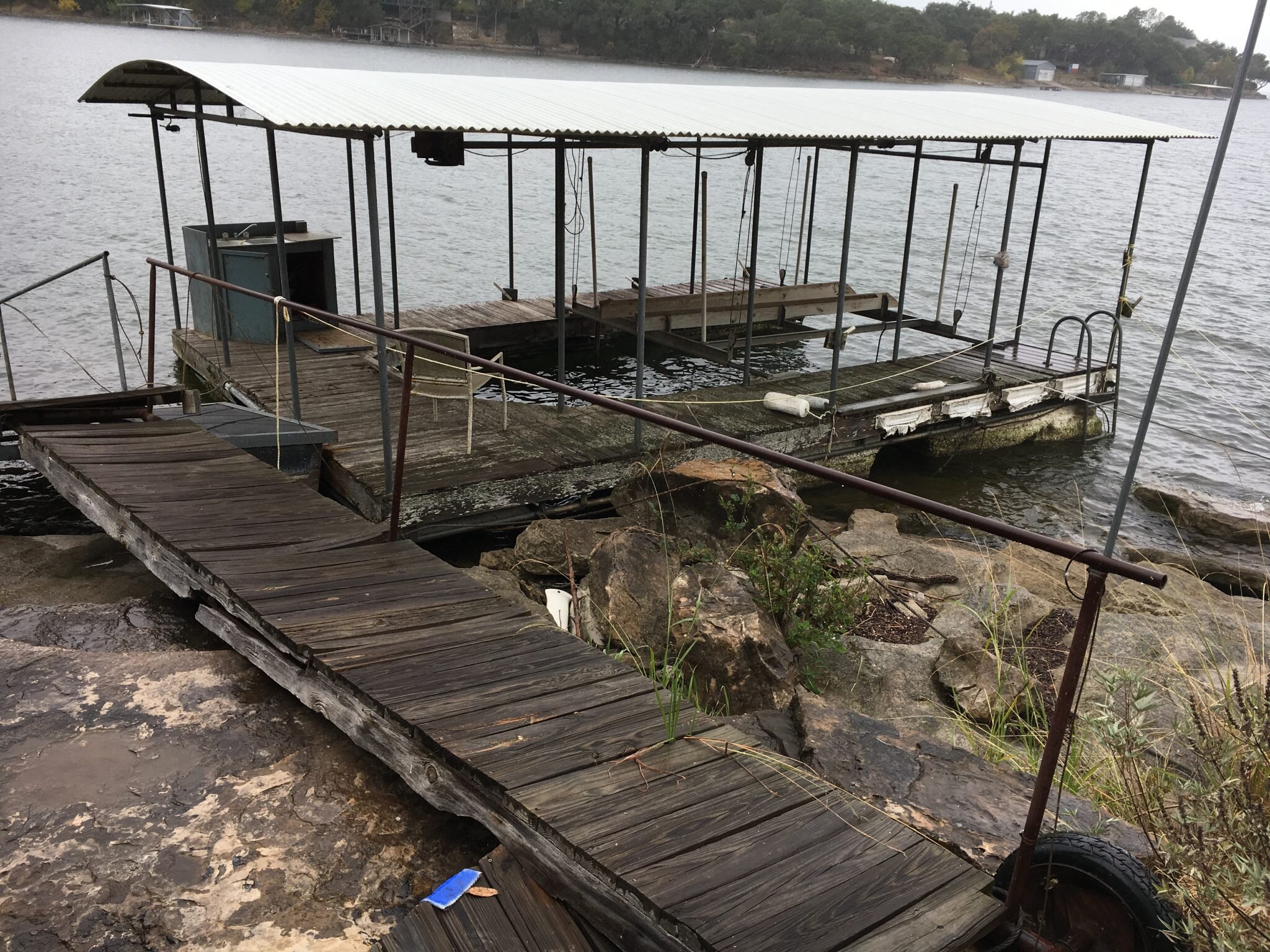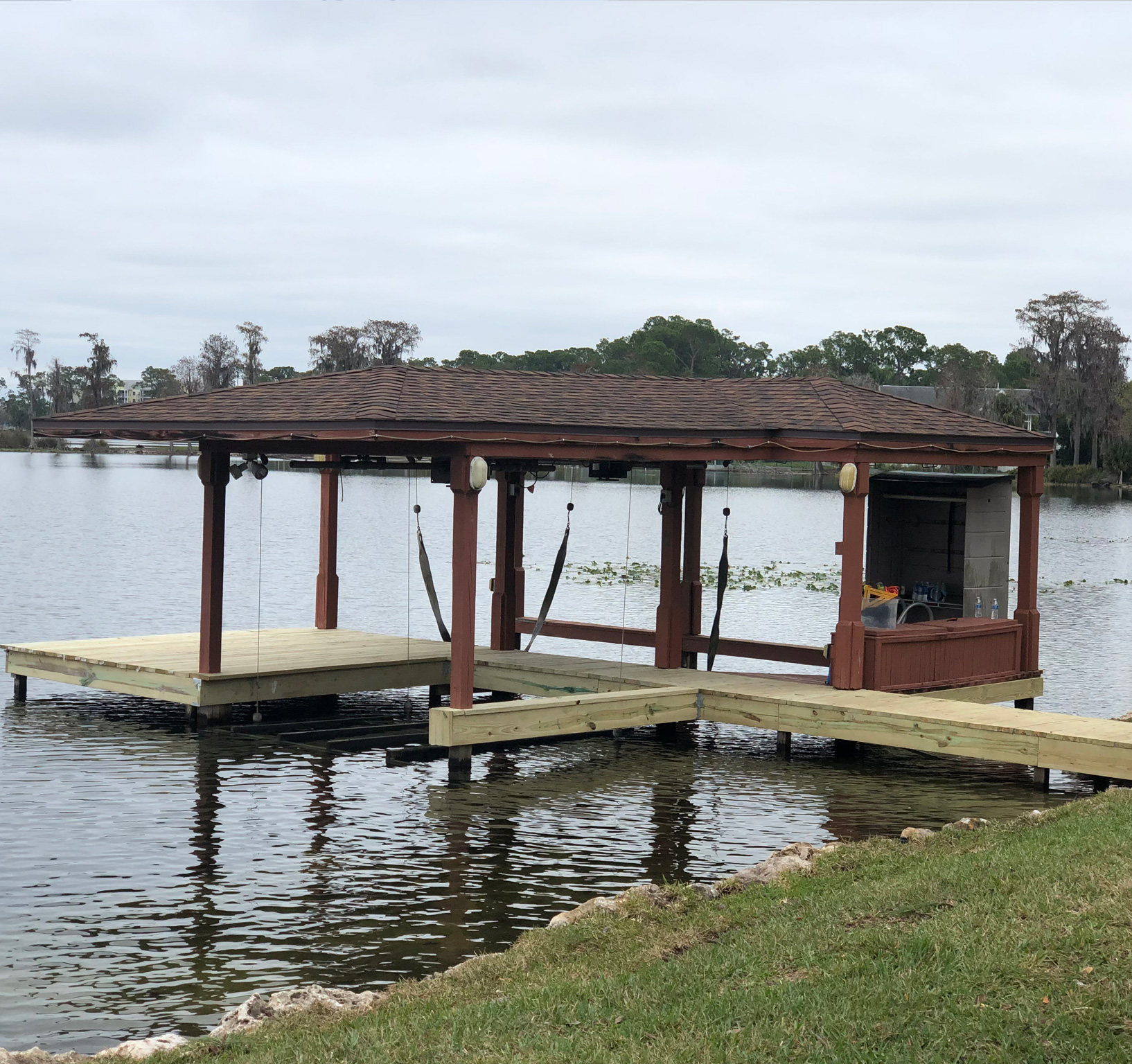DIY Tips for Simple Dock Repairs You Can Manage
DIY Tips for Simple Dock Repairs You Can Manage
Blog Article
Efficient Dock Repair Techniques: Making Sure Architectural Integrity
Ensuring the structural integrity of anchors through effective repair strategies is paramount for the durability and security of aquatic facilities. This entails a multi-faceted strategy beginning with comprehensive inspections making use of innovative innovations like finder tools and remotely ran lorries (ROVs) to detect both visible and hid problems. Subsequently, choosing the ideal repair work products, such as composite products and corrosion-resistant alloys, is critical for durability. Structural support approaches, consisting of the execution of cross-bracing systems and load-distribution plates, play a crucial duty in mitigating stress and anxiety factors. Nevertheless, the value of these techniques becomes evident when discovering advanced fixing techniques and preventative maintenance techniques.
Evaluating Dock Damages
Evaluating dock damage is an essential very first step in making certain the structural honesty and safety of any docking center. This initial examination involves an extensive inspection to recognize both concealed and visible problems. Key elements to analyze consist of the dock's foundation, pilings, decking, and equipment. Each element should be scrutinized for indications of wear, rot, corrosion, or other kinds of destruction that can endanger the structural integrity.
Structural designers or certified examiners normally carry out these assessments making use of specialized methods and devices. As an example, underwater examinations might use finder devices or from another location ran cars (ROVs) to discover immersed damages. Above water, aesthetic inspections are matched by utilizing dampness meters and other analysis devices to reveal underlying concerns not right away noticeable to the naked eye.

Finding Repair Work Materials
Picking the proper fixing materials is a crucial action in the dock restoration process, one that straight affects the longevity and performance of the fixed framework. Material choice have to be driven by elements such as environmental problems, load-bearing needs, and compatibility with existing dock components. For example, timber is a conventional selection for anchors due to its natural durability and visual allure. However, choosing the right kind of wood, such as pressure-treated lumber or naturally rot-resistant species like cedar or teak, is crucial to hold up against aquatic atmospheres.
Along with timber, composite products are progressively preferred due to their longevity and low upkeep needs. Compounds, generally made from a blend of plastic and wood fibers, supply excellent resistance to rot, pests, and UV damages. For steel anchors, selecting corrosion-resistant alloys such as galvanized steel or marine-grade aluminum is important to stop corrosion and make sure architectural honesty in saline water problems.
Epoxy materials and marine-grade sealants are important for fixing cracks and securing joints, providing a water-proof obstacle and boosting the dock's total stamina. By thoroughly picking top quality materials, dock fixings can attain long-lasting outcomes, thus protecting against future destruction and ensuring risk-free, reputable usage.
Architectural Reinforcement Strategies
Effective architectural reinforcement strategies are vital in making sure the security and long life of dock repair services. site web This technique is particularly reliable for docks exposed to heavy lots or extreme environmental problems.
One more necessary method is the application of fiber-reinforced polymers (FRP) These materials offer high strength-to-weight proportions and outstanding resistance to corrosion, making them suitable for reinforcing concrete or wooden docks. FRP can be applied in sheets or strips and bonded with epoxy resins to improve architectural integrity.
Supporting and securing systems also play an important role in architectural reinforcement. Cross-bracing, making use of steel or wooden light beams, can counteract side pressures, lowering swaying and activity. Securing systems, such as helical piers or driven heaps, offer a stable foundation by moving tons to deeper, a lot more stable soil layers.
Lastly, the integration of load-distribution plates can help disperse weight extra equally throughout the dock's surface, mitigating local tension points. These methods jointly make sure that docks continue to be durable and safe, capable of withstanding the roughness of their functional setting.
Advanced Repair Work Methods

An additional sophisticated strategy entails undersea welding, which permits for fixings to be carried out without the need to dewater the location. This method is particularly useful for attending to structural Our site issues in submerged dock elements, making certain minimal interruption to procedures. Improved welding methods, paired with robotic systems, supply accuracy and dependability, consequently expanding the lifespan of the dock.
In addition, cathodic protection systems are applied to stop rust in metallic dock frameworks. By utilizing sacrificial anodes or impressed current systems, these methods properly reduce the electrochemical procedures that cause product degeneration.
Lastly, advanced tracking technologies, such as structural health and wellness monitoring (SHM) systems, offer real-time information on the problem of dock structures. These systems enable proactive maintenance and timely interventions, ultimately making certain the long-term structural honesty of the dock.
Upkeep and Avoidance
Upkeep and avoidance are basic concepts that underpin the durability and security of dock structures. Routine inspections are critical, enabling early discovery of deterioration, potential weaknesses, and environmental impacts. A positive approach, involving regular look for corrosion, rot, and architectural shifts, minimizes pricey repairs and prolongs the dock's operational life.
Preventative measures ought to include applying protective layers to metal elements to guard versus corrosion and using cured timber to stand up to decay. Additionally, making certain appropriate drainage and air flow can stop water build-up, which is a typical cause of architectural deterioration. Integrating quality materials and adhering to manufacturer guidelines throughout building and fixing stages also play vital roles in enhancing toughness.

Educating employees in dock upkeep finest methods guarantees constant application of preventive measures. Leveraging technological developments, such as drones for assessments and sensors for real-time tracking, can even more boost upkeep efforts. By focusing on upkeep and avoidance, dock owners can make certain structural integrity, operational security, and cost-effective monitoring over the dock's life expectancy.
Verdict
In verdict, keeping the structural integrity of aquatic facilities necessitates thorough dock repair work methods. Advanced repair strategies, paired with normal maintenance techniques, make certain the dock remains functional and safe under varied environmental conditions.
Guaranteeing the architectural honesty of docks via find here reliable repair strategies is vital for the long life and safety of aquatic centers.Picking the proper fixing products is a crucial action in the dock restoration process, one that straight affects the longevity and efficiency of the fixed structure.Effective architectural reinforcement strategies are essential in guaranteeing the stability and durability of dock repair work. By focusing on upkeep and prevention, dock proprietors can guarantee structural integrity, functional security, and cost-effective management over the dock's lifespan.
In conclusion, keeping the architectural integrity of aquatic facilities demands detailed dock fixing methods.
Report this page